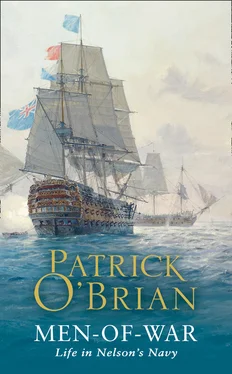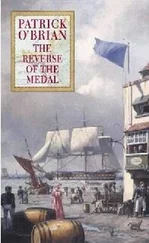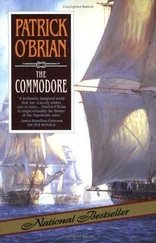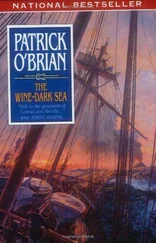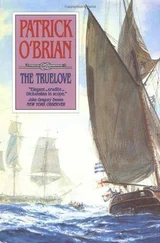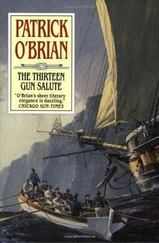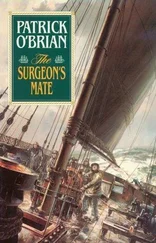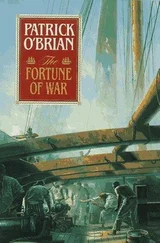In 1793, counting those that were being built or repaired, those that were laid up and those that were stationary harbour ships, the Royal Navy had 153 ships of the line, 43 50- and 44-gun two-deckers, 99 frigates, and 102 unrated vessels.
I say vessels rather than ships because, although a vessel means anything that floats or is meant to float, for a sailor a ship is something quite distinct: it is a vessel, of course, but it is a square-rigged vessel with three masts (fore, main and mizen) and a bowsprit; what is more these three masts must be made up of a lower-mast, topmast and topgallantmast, and anything with only two masts (such as a brig) or with three all in one piece (such as a polacre) that presumed to call itself a ship would have been laughed to scorn, hooted down, given no countenance whatsoever.
The most usual line-of-battle ship was the 74: there were 73 of them at the beginning of the war and 137 in 1816. A 74 weighed about 1,700 tons and she needed some 2,000 oak trees to build her – 57 acres of forest. In the 1790s England could supply much of the wood, but as the years went by the forests began to look very thin, for an oak tree does not spring up overnight; and at least half the timber had to be imported. It was always oak, the very best oak, for nothing else would bear the terrible strain of the winter storms or the shock of battle: fir was tried for frigates and cedar for smaller craft, but it did not answer – heart of oak was the only thing for a man-of-war. Masts and yards had to be imported too: they were made of fir, and they had to be very long and straight. The mainmast of a first-rate was made up of three sections 117, 70 and 35 feet long, while her main yard was 102 feet across – such trees could be found in large numbers only in America or the north.
The building of a man-of-war was a highly-skilled, long and complicated business that I could not describe in less than ten volumes, but roughly this is how they set about it. First the ship was worked out on paper, sometimes following the plans of the beautiful and fast-sailing French or Spanish ships that were captured; then a model might be made, usually to the scale of a quarter of an inch to the foot (there are a great many of these models in the Maritime Museum at Greenwich and several in the London Science Museum); and then the keel would be laid, generally in one of the royal dockyards but sometimes in private shipbuilders’ yards. The keel was a massive assembly of elm, and to this were fixed the great rib-like oak timbers, first the stem (in front) and then the stern-post to take the rudder; then came the midship floor-timber and all the rest of the ship’s framework. When this was done the ribs were planked inside and out and the beams laid across. The decks were laid on the beams, with proper places for the masts, and when the hull was finished it was divided up by bulkheads into store-rooms, powder-magazines, cabins and so on, with ladders for going up and down, and the whole of the hull that was to be under water was coppered against the attacks of the teredo, a sea-worm that used to pierce holes right through the bottom, before this plating was thought of halfway through the eighteenth century.
All this took a long time – the Victory , for example, was laid down in 1759 but not launched until 1765 – and seeing that the wood was out in all weathers it often began to rot even before the ship was finished. The truth of the matter is that most of the British ships were not nearly so well built as the French or Spanish: they were often slow; they nearly always carried too many guns; they were sometimes very crank – that is, they leaned over in a wind so that they could not open the lower gun-port or the sea would rush in; and occasionally they fell to pieces in a storm. Among the worst were the Forty Thieves, forty ships of the line that were all built in private yards by dishonest contractors, and that were looked upon as floating coffins: but sometimes the royal yards were not much better. Nevertheless the Royal Navy won all the great fleet battles and nearly all the smaller actions between ships of roughly equal force. They did so partly out of force of habit, partly by better gunnery, and even more by better seamanship – you can only learn to be a sailor at sea, and the English Navy was at sea all the year round, whatever the weather, whereas the French and Spaniards were shut up in their harbours.
Now I will say something about the decks, and the sails and rigging, although the pictures show these things better than any number of words. Suppose we were transported to the bottom of a three-decker: we should be in the hold, a vast dark space about 150 feet long, 50 wide and 20 high, with curving sides, with a good many rats in it and a horrible smell of bilge-water – no fresh air and no light, because it would be well under the water-line. Most of it would be taken up with ballast, fresh water in casks, casks of salt pork and beef – enough to feed eight hundred men for six months – the cloth-lined powder magazine, the tin-lined bread-room, and all sorts of other stores. Overhead would be the orlop-deck, near the water-line. Right aft on the orlop was the cockpit, where the older midshipmen lived and where the wounded were treated in battle; forward of the cockpit were cabins for the junior officers – little dark, airless cupboards; then the sail-room with the spare sails; then the cable-tiers, where the great cables were stowed (some were 25 inches round, and all were 101 fathoms long); then the fore-cockpit where the boatswain and carpenter had their cabins and store rooms. Above the orlop was the lower deck, where the first and heaviest tier of guns stood in two rows facing their gun-ports, 32-pounders, weighing nearly three tons apiece. This was also called the mess-deck, for here the seamen ate and slept. Right aft lay the gun-room, where the gunner lived and where the junior midshipmen slung their hammocks; and right forward was the manger, a compartment designed to prevent the water that came through the hawse-holes from sweeping along the deck – it was also the place where the ship’s pigs, sheep and cattle were kept. Above the lower deck came the middle deck, with its rows of 24-pounders; and above that the upper or main deck, with its 18-pounders. The ward-room, where the senior officers messed, was at the after end, and their cabins usually opened off it. Still higher, from the stern to the mainmast, ran the quarterdeck, and on the same level as the quarterdeck, from the foreshrouds to the bows, the forecastle, the one with ten 12-pounders and the other with two: the quarterdeck and forecastle were connected by gangways. Lastly, above the after part of the quarterdeck, from the mizenmast to the stern, there was the poop, the roof of the captain’s quarters – his sleeping cabin, his fore-cabin, and his beautiful great after-cabin which opened on to a stern-gallery (very like a balcony) where he could walk and admire the view in privacy.
A first-rate ship, the Victory , in cross-section.
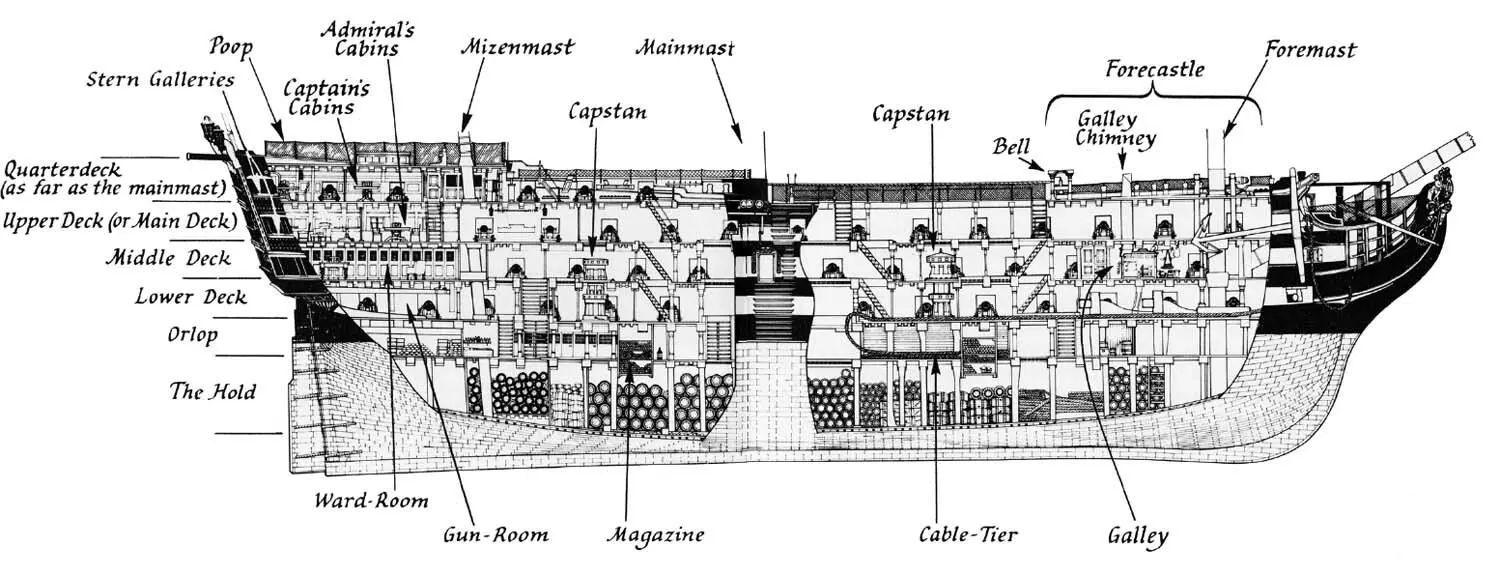
But here we are speaking of a first-rate, a three-decker, and many three-deckers were flagships – that is, they had an admiral aboard. When this was so, the great man occupied the after end of the main deck, just under the captain, and the lieutenants and their wardroom moved down to the middle deck.
In the case of two-deckers, the arrangement was much the same, only the middle deck was left out; but in one-deckers, such as frigates, there was no poop – the captain’s cabin was under the quarterdeck, on the main deck, and the lieutenants took over the gun-room on the deck below for their mess, banishing the gunner to a cabin forward and the younger midshipmen to the cockpit.
Читать дальше
